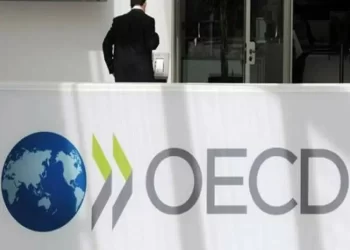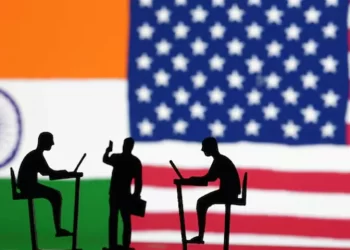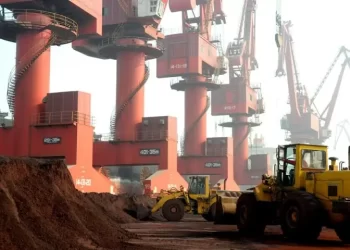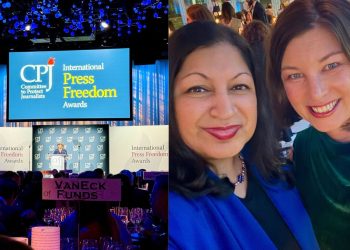MEXICO CITY (news agencies) — Every day at 7 a.m., President Andrés Manuel López Obrador strolls onto a stage in Mexico’s National Palace, clad in a smart suit and tie, and peers out at a room of bleary-eyed reporters and social media personalities. “Buenos días, look alive!” the 70-year-old leader calls out in a gravelly voice.
And the show begins.
Throughout his nearly six-year term in office, López Obrador’s morning media briefings, known as “las mañaneras,” have provided him with a powerful tool: a direct line to his political base, broadcast live on government and local news channels, and streaming online. Without pausing to take bathroom breaks or even a sip of water, the president stands at the podium talking for sometimes more than three hours, often in long, roundabout musings or rambling diatribes, all in simple language that anyone tuning in can understand.
Before he leaves office Monday, the daily briefings, beloved by many supporters and criticized by opponents as full of falsehoods and personal attacks, are emblematic of the particular brand of folksy populism that López Obrador wielded to become one of the most powerful political forces Mexico has seen in decades. It’s a model that his successor and protege, President-elect Claudia Sheinbaum, will be hard-pressed to emulate.
“The national conversation revolves around him,” said Daniela Lemus, a National Autonomous University of Mexico professor who researches political communication and has written about the briefings. “He is the protagonist of the mañaneras … and what he says becomes the main topic of conversation by the media, day and night.”
When López Obrador won the presidency in a landslide in 2018, he pitched himself as a fighter for poor, working-class and rural Mexicans long neglected by the political elite. He started holding the briefings right after taking office that December, and has continued to do so every workday almost without fail for the duration of his time in office.
They’re popular with his base: One older adult couple in Mexico City, for example, tune in religiously on a small TV wedged between bags of seeds and nuts at their stall in a food market. Elsewhere, a magazine vendor records the broadcast to watch at night after work. Still another fan of AMLO, as the president is popularly known, streams it on social media while he looks for work.
“The mañaneras have opened our eyes. They show us all what Mr. López Obrador has achieved,” said Jesús Hernández Alarcón, a 79-year-old roasted corn vendor. “We have understood a lot because the media is full of lies, many have tricked us. Now that we have the mañaneras, everything has changed for me.”
López Obrador often uses the space to provide updates on key projects and take questions from a cluster of journalists and government-friendly social media influencers, some of whom have gained a platform from their participation in the briefings — such as Carlos Pozos Soto, an eccentric, bow-tied, effusively pro-AMLO figure better known as Lord Molecule.
As time has gone on, the briefings have morphed into something resembling a morning show, with López Obrador inviting mariachi bands to serenade viewers on Mother’s Day, lecturing at length on Mexican history and hosting recurring segments such as “Who’s who in the lies of the week,” in which government officials attack critical media.
“This is a way to educate, to raise awareness so that (traditional news organizations) cannot manipulate” information, López Obrador said one morning in August. “People are more informed, and that comes with a lot of advantages. … There is no topic that is off limits, there is no censorship.”
López Obrador’s willingness to publicly joust with journalists has had all the more impact because his predecessor, Enrique Peña Nieto, almost never took a question during his own six-year term.
But while the president calls the briefings a bastion of transparency in a nation long plagued by corruption, critics say he has used them to badmouth opponents and journalists, spread false information and firmly control the political narrative.
Often, rather than answering a question directly, he instead uses it as a launching pad to talk about one of his preferred topics. He consistently sidesteps questions about Mexico’s continuing cartel-fueled violence, for example, or pivots to rail against his predecessors for starting the drug war.
López Obrador has attacked judges, criticized opponents during election campaigns and regularly targeted both domestic and foreign journalists.
In February, after a New York Times reporter sought comment for an article investigating ties between his administration and drug cartels, the president disclosed her cellphone number during a morning briefing.
And last month, when an independent Mexican journalist said she had been harassed by a mob of his supporters and forced to flee an event she was covering, López Obrador responded with a mix of scorn and disinterest.
“I am at risk because of this, now anyone can attack me in the street,” Reyna Ramírez told the president. “You have polarized society. Don’t you have anything to say about that?”
“Have you gone on long enough?” the president said.
Advocates for press freedom have expressed concern over his hostility toward critical media in a place that is more dangerous for journalists than any other country not currently at war. At least 138 journalists have been killed in Mexico in the past 20 years, according to the Committee to Protect Journalists, and many more have gone missing or been threatened, attacked, tortured or forced to flee their homes.









